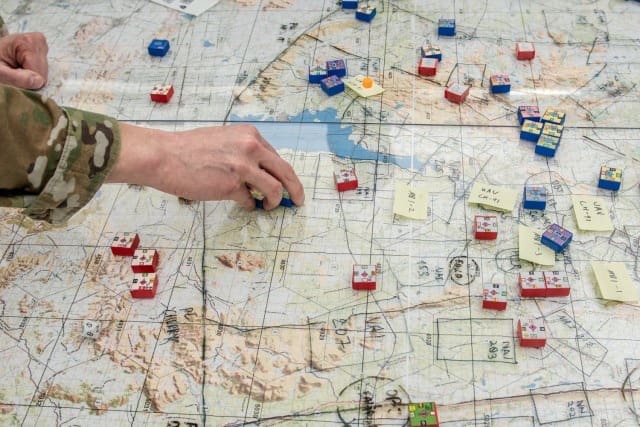Army University Enhances Operational Skills through Division Offensive Operation Practicum

FORT LEAVENWORTH, Kansas – The Command and General Staff College at the Army University was filled with a vibrant atmosphere from March 26 to March 28, 2025, as students engaged in a comprehensive Division Offensive Operation practicum. Designed to simulate a real division command post, the classrooms buzzed with communication and activity, reflecting the intense preparation that military officers undergo.
A substantial focus was placed on conducting a Targeting Working Group (TWG). This student-led initiative involved replicating the critical role of a division staff while directing combat actions and establishing conditions necessary for successful offensive operations in large-scale combat scenarios. The exercise allowed students to immerse themselves in the complexities of military planning and execution.
Students were fortunate to receive immediate guidance and mentorship from experienced leaders in the field. Department of the Army Tactics Instructors, Matt McKinley and Brian Leakey, brought a wealth of knowledge and decades of experience to the classroom, providing invaluable insights drawn from their extensive backgrounds in military tactics.
Two warrant officers, CW4 Calvin Cameron and CW3 Jerry Burks, further enriched the students’ learning experience through open conversations that highlighted their operational experiences with targeting. This exchange of ideas was instrumental in deepening the students' understanding of the intricacies involved in military targeting and operations.
Upon completing the practicum, students emerged better equipped for their future roles as division staff officers. They are tasked with offering critical recommendations to commanders to guide their units in combat situations effectively. Captain Michael West, a CGSOC student, elaborated on the significance of this training, stating, “In our first field grade roles as junior majors, our job is to integrate operations at echelon within the division. This past year has been an opportunity to learn from the different branches in our small group and understand how to synchronize information, planning, and execution preparation. Over the last three weeks, the chance to see this at the division level was excellent preparation before stepping into our next roles.”
During the practicum, each student was assigned specific responsibilities, which included identifying and nominating targets for division, corps, and joint assets vital for enabling a division offensive operation, typically 24 to 96 hours before execution. The detailed planning required, rehearsals in both time and space, and continuous communication across various functional teams ensured that all operations were synchronized effectively.
Major Stewart Tice, who took on the role of division chief of staff, emphasized the importance of the TWG in helping participants grasp the myriad roles and functions involved in modern warfare. “We learned to conduct current operations while simultaneously planning our next steps and developing responses to unforeseen events,” Tice explained. “This approach encourages us to think beyond our immediate responsibilities, focusing on what we must achieve today to secure the brigade’s success tomorrow.”
To conclude the practicum, students delivered an after-action review (AAR) to their leadership, encapsulating the insights and lessons learned throughout the exercise. Major James Corbitt remarked, “Everything we do during training is designed to mirror the real-world experiences we’ll face when we return to the field. This immersive exercise allows us to observe how rotations are managed, practice the necessary processes, and receive feedback during the AAR, which is a crucial aspect of the military operations process.”
Reviewing and assessing the outcomes of actions and decisions made by division staff during a large-scale combat operation is essential for capturing lessons learned and reinforcing learning objectives. Captain West reflected on his past experiences, stating, “Before attending CGSS, I completed a broadening assignment with the Mission Command Training Program. I realized our discussions before execution were strikingly similar to those held at MCTP, which is a testament to our success.”
This practicum not only prepares the future leaders of the Army but also reinforces the institution’s commitment to ensuring that its officers are ready to face the challenges of modern warfare with confidence and skill.











